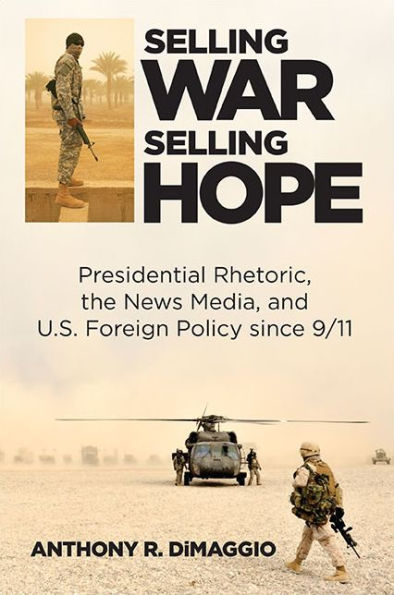Details how presidents utilize mass media to justify foreign policy objectives in the aftermath of 9/11.
Modern presidents have considerable power in selling U.S. foreign policy objectives to the public. In Selling War, Selling Hope, Anthony R. DiMaggio documents how presidents often make use of the media to create a positive informational environment that, at least in the short term, successfully builds public support for policy proposals. Using timely case studies with a focus on the Arab Spring and the U.S. “War on Terror” in the Middle East and surrounding regions, DiMaggio explains how official spin is employed to construct narratives that are sympathetic to U.S. officialdom. The mass media, rather than exhibiting independence when it comes to reporting foreign policy issues, is regularly utilized as a political tool for selling official proposals. The marginalization of alternative, critical viewpoints poses a significant obstacle to informed public deliberations on foreign policy issues. In the long run, however, the packaging of official narrative and its delivery by the media begins to unravel as citizens are able to make use of alternative sources of information and assert their independence from official viewpoints.
Details how presidents utilize mass media to justify foreign policy objectives in the aftermath of 9/11.
Modern presidents have considerable power in selling U.S. foreign policy objectives to the public. In Selling War, Selling Hope, Anthony R. DiMaggio documents how presidents often make use of the media to create a positive informational environment that, at least in the short term, successfully builds public support for policy proposals. Using timely case studies with a focus on the Arab Spring and the U.S. “War on Terror” in the Middle East and surrounding regions, DiMaggio explains how official spin is employed to construct narratives that are sympathetic to U.S. officialdom. The mass media, rather than exhibiting independence when it comes to reporting foreign policy issues, is regularly utilized as a political tool for selling official proposals. The marginalization of alternative, critical viewpoints poses a significant obstacle to informed public deliberations on foreign policy issues. In the long run, however, the packaging of official narrative and its delivery by the media begins to unravel as citizens are able to make use of alternative sources of information and assert their independence from official viewpoints.

Selling War, Selling Hope: Presidential Rhetoric, the News Media, and U.S. Foreign Policy since 9/11
432
Selling War, Selling Hope: Presidential Rhetoric, the News Media, and U.S. Foreign Policy since 9/11
432
Product Details
| ISBN-13: | 9781438457956 |
|---|---|
| Publisher: | State University of New York Press |
| Publication date: | 10/01/2015 |
| Pages: | 432 |
| Product dimensions: | 6.00(w) x 9.10(h) x 1.40(d) |
